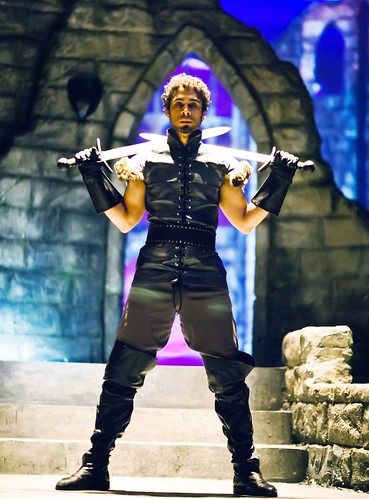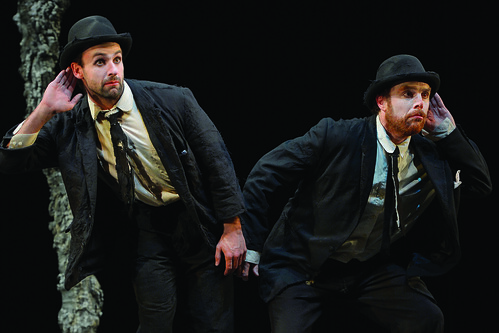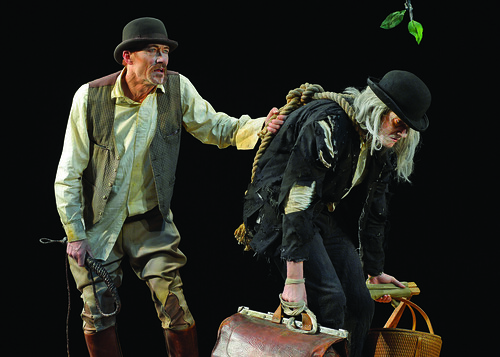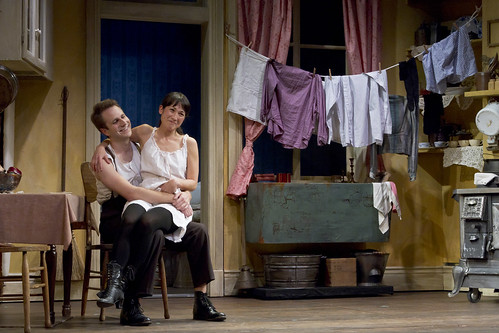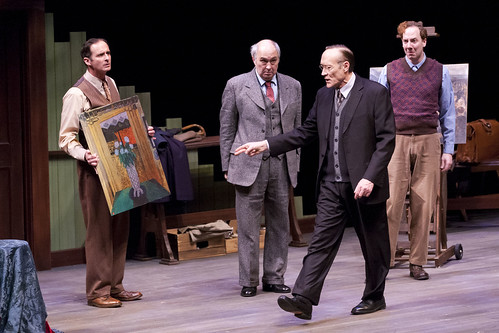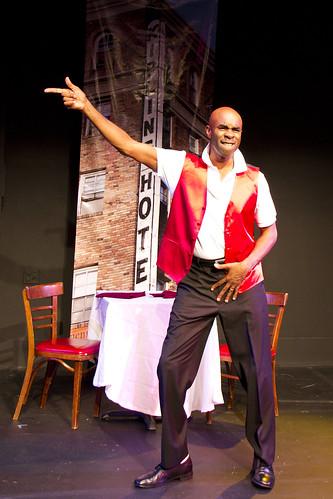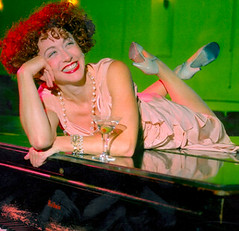

Knights of the realm: Patrick Stewart (left, photo by Robert Ascroft) and Ian McKellen (photo by Sarah Dunn) bring Harold Pinter’s No Man’s Land to Berkeley Repertory Theatre before taking it to Broadway, where it will run in rotating rep with Samuel Beckett’s Waiting for Godot.
It’s not the worst thing in the world to have to spend an hour with two of England’s finest: Sir Ian McKellen and Sir Patrick Stewart. Though more famous from TV and film than for their extraordinary stage careers (on both sides of the Atlantic), the two journeymen actors are giving up the sci-fi/fantasy limelight to return to their first love: the stage.
They are currently on stage at Berkeley Repertory Theatre’s Roda Theatre in Harold Pinter’s No Man’s Land co-starring Billy Crudup and Shuler Hensley. (Good luck getting a ticket; they’re awfully hard to come by, as you might expect.)
I interviewed McKellen and Stewart for an article in the San Francisco Chronicle. You can read the full story here (subscription may be required).
Here’s my favorite part of the interview when the actors talk about the original 1975 production of No Man’s Land starring John Gielgud and Ralph Richardson:
“I saw the original production of ‘No Man’s Land’ in London starring John Gielgud and Ralph Richardson three times in one week,” Stewart says. “I couldn’t get enough. I’d have gone again if I’d had the money. It was the brilliance of the writing. I don’t think there’s anything quite like this play. I have been quoting bits of the play for years that I remembered simply from being in the audience.”
McKellen also saw that 1975 production and says Gielgud, whose role he is playing, left a lasting impression – maybe too lasting.
“I feel like I could do the whole performance as John Gielgud,” McKellen says. “Then I wouldn’t be feeling half so tired as I am trying not to be John Gielgud.”
“Ian had a bit of a meltdown in rehearsal today,” Stewart interjects. “He thought Gielgud had possessed him, which was not the case at all.”
Stewart is mostly resisting re-creating Richardson’s performance, but he does mimic the late great British actor every time he pours a drink onstage.
“I’m allowing myself one moment of homage when I say, ‘Good Lord, did you really?’ like Richardson,” Stewart says with gusto. “Richardson also wore dazzling blue socks under a silver suit. I’d like to do that if our designer can find the right socks.”
Here’s an exchange that didn’t make it into the final article.
McKellen: The first time I remember an actual conversation with Patrick, we were in America. You’d just been offered a chance at Star Trek.
Stewart: Yes. It was that week. I had been given from Monday lunch until Friday lunch to make a decision. I was staying with a friend and you came over for dinner.
McKellen: You asked me what I thought you should do, and I said, “Think very carefully.”
Stewart: You were reserved and cautious.
McKellen: It wasn’t that the material wasn’t worth doing. It was just the prospect of six years living outside your own country.
Stewart: That’s what terrified me about the part. As is now part of the Star Trek mythology, I spent those four days talking to everybody I knew with any experience of Hollywood. Without exception, they said that I shouldn’t worry about those six years. They said I’d be lucky to make it through the first season because you cannot resurrect an iconic series. I remember a well-established Hollywood writer telling me to take and make money for the first time (which was true), get a suntan, meet girls and go home. I was married at the time, so I didn’t meet any girls.



